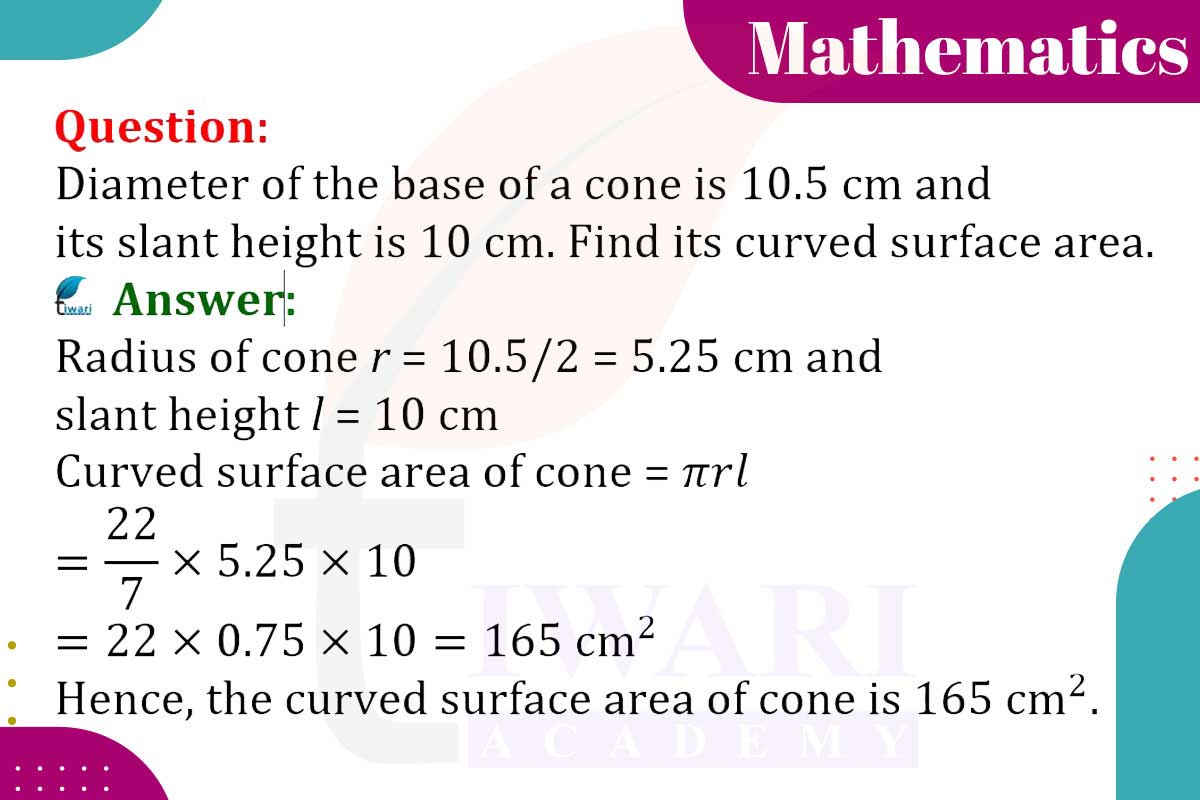The curved surface area of a cone is calculated using the formula πrl, where r is the radius and l is the slant height. For a cone with a 10.5 cm diameter (5.25 cm radius) and a 10 cm slant height, the area is 52.5π cm². Using π ≈ 3.14, it approximates to 164.93 cm².

Let’s discuss in detail
Understanding the Curved Surface Area of a Cone
The concept of curved surface area is particularly important in geometry, especially when dealing with three-dimensional shapes like cones. The curved surface area refers to the area of the outer surface of the cone, excluding its base. This concept is widely used in various fields, including architecture, engineering, and design.
Basic Formula for Curved Surface Area
The formula to calculate the curved surface area of a cone is given by πrl, where r is the radius of the base of the cone, and l is the slant height of the cone. This formula is derived from the properties of a circle and the Pythagorean Theorem, considering that a cone is essentially a circle rotated around one of its diameters.
Given Dimensions of the Cone
In our specific problem, we are given the diameter of the base of the cone as 10.5 cm and the slant height as 10 cm. The diameter is the total distance across the circle that forms the base of the cone. The slant height is the distance from the top of the cone (vertex) to any point on the rim of the base, measured along the surface of the cone.
Calculating the Radius
The first step in our calculation is to determine the radius of the base of the cone. The radius is half of the diameter. Therefore, for a cone with a diameter of 10.5 cm, the radius r is calculated as r = 10.5/2 = 5.25 cm.
Applying the Formula
With the radius and the slant height known, we can apply the formula for the curved surface area. Substituting the values into the formula πrl, we get π × 5.25 × 10.
This calculation will give us the curved surface area of the cone in square centimeters.
Final Calculation and Result
To get a numerical value, we use the approximation π ≈ 3.14. Thus, the curved surface area is approximately 52.5 × 3.14 ≈ 164.93 cm². Therefore, the curved surface area of the cone with the given dimensions is approximately 164.93 cm². This calculation is crucial for practical applications where precise measurements are needed, such as in construction and manufacturing.
Discuss this question in detail or visit to Class 9 Maths Chapter 11 for all questions.
Questions of 9th Maths Exercise 11.1 in Detail



